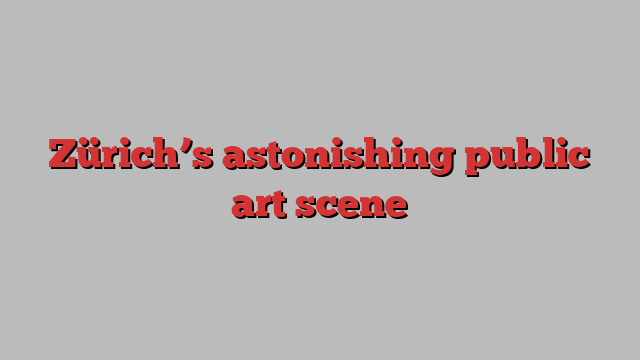
This article is part of FT Globetrotter’s guide to Zürich
Wandering the streets of Zürich allows you to marvel at an extraordinary range of public art. It starts in the Middle Ages, with carved drinking fountains; continues with 19th- and 20th-century sculptures, reliefs and murals; and today includes multimedia installations by contemporary artists. This formal public art is in constant dialogue with informal art.
In 1977, spray-painted figures started to appear across the city: a spindly Cyclops in a car park; a fertility goddess on a bank; a menacing spider in an alleyway. At the time we were living in Geneva, and my mother took me (aged nine) on a day trip to Zürich to hunt for works by the anonymous “Sprayer of Zürich”. This was long before graffiti had become mainstream, when Swiss cities were bastions of Brutalism, and it was a thrilling day out. There was something exhilarating about the vitality of these swiftly and defiantly wrought creatures: whimsical and irreverent, yet also ancient and mythological.
It took two years for the Zürich police to discover the identity of the artist: Harald Naegeli, from an affluent background on the Züriberg. He was fined and sentenced to nine months in jail. His relationship with the authorities has continued to be turbulent: the city seems forever torn between acknowledging his talent and condemning his vandalism.
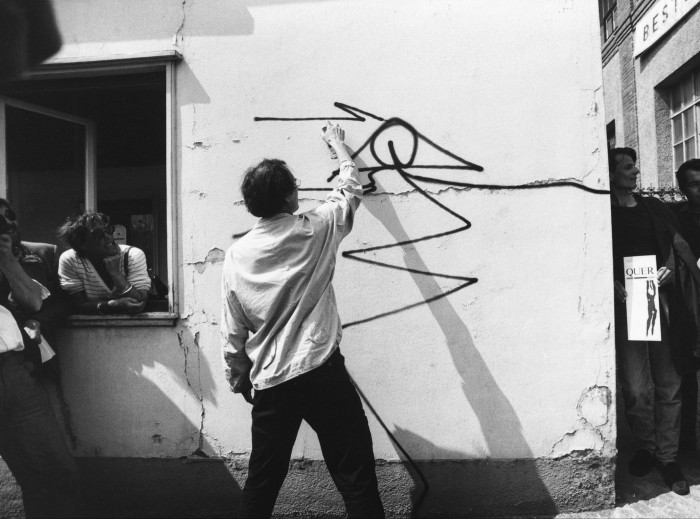
In 2018, after receiving a commission to paint a “Dance of Death” by a staircase in the prestigious Grossmünster church, Naegeli and the church authorities publicly fell out. In 2020, however, he was awarded the Art Prize of the City of Zürich (with a generous cash prize of SFr50,000, not quite matching the SFr100,000 fine of 1981). The same year, Naegeli returned to live in Zürich, after almost 40 years in Germany, an old and sick man. Within days of lockdown beginning, however, he was back on the streets painting dozens of death figures and pink flamingos (symbolising freedom).
Several were on the walls of the Kunsthaus; the museum promptly removed the works and brought criminal charges against Naegeli, but within a couple of years was organising an exhibition of his work, drawing on the archives of the Zürich police for images of his lost pieces.
The irony of the Naegeli drama is that it has happened in such a public art-loving city. Zürich has had public sculptures since the late Middle Ages; since the 1940s, it has prescribed that up to 1.5 per cent of the capital costs of new buildings must be spent on public art. The city has a whole department devoted to new commissions. Here are three suggested walks to take in the highlights.
Around the Paradeplatz: patrician grandeur
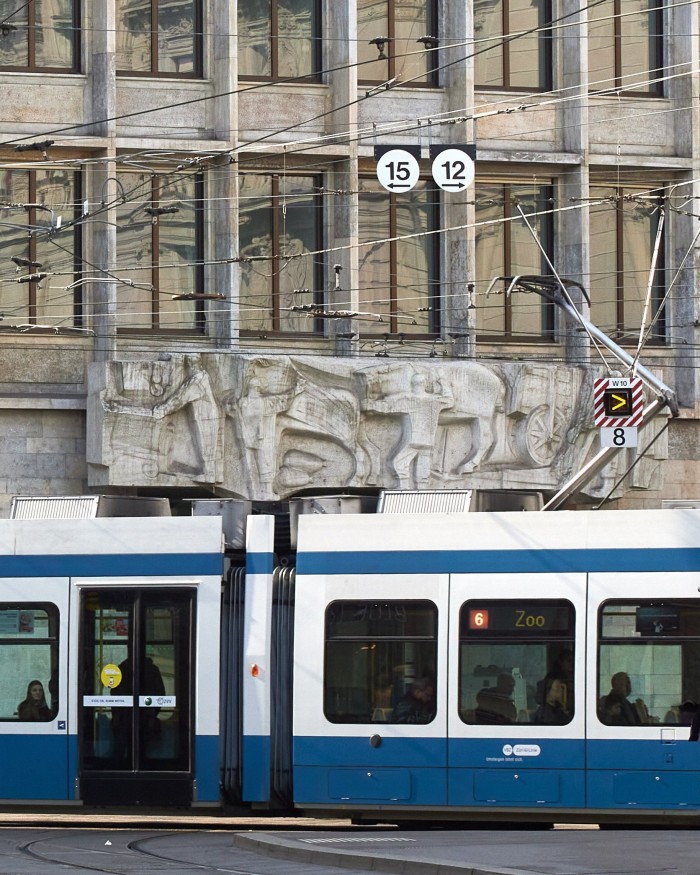
Standing on Paradeplatz, you are surrounded by 150 years of grand buildings with grand art. Briefly turn your back on Confiserie Sprüngli, and look across the square to the classical figures atop the Beaux-Arts Credit Suisse building (Charles-François-Marie Iguel, 1882), and then left, to Franz Fischer’s wonderful 1958 relief, “Work”, which brings texture and life to the severe façade of UBS (there are also attractive reliefs by Fischer on the Talacker side of the building).
In front of the Bahnhofstrasse side of Sprüngli stands the exuberant “Big Boom” (Silvio Mattioli, 1978-79): a metaphor, perhaps, for the sugar rushes induced by the confiserie. Walk up Bahnhofstrasse towards the station, admiring neo-Gothic sculptures on the façade of clothing store Grieder (No 30) and the Art Nouveau lions (an emblem of Zürich) at No 32. In the beak of the Pelikanstrasse stands a monumental work by the celebrated Zürich Concrete artist Max Bill: “Pavillon-Skulptur” (1979-83), functioning as a sculpture, bench and playground. Cross Bahnhofstrasse and head down Augustinergasse to Münzplatz, where you will find a lovely figure of Moderation atop the fountain (1761).
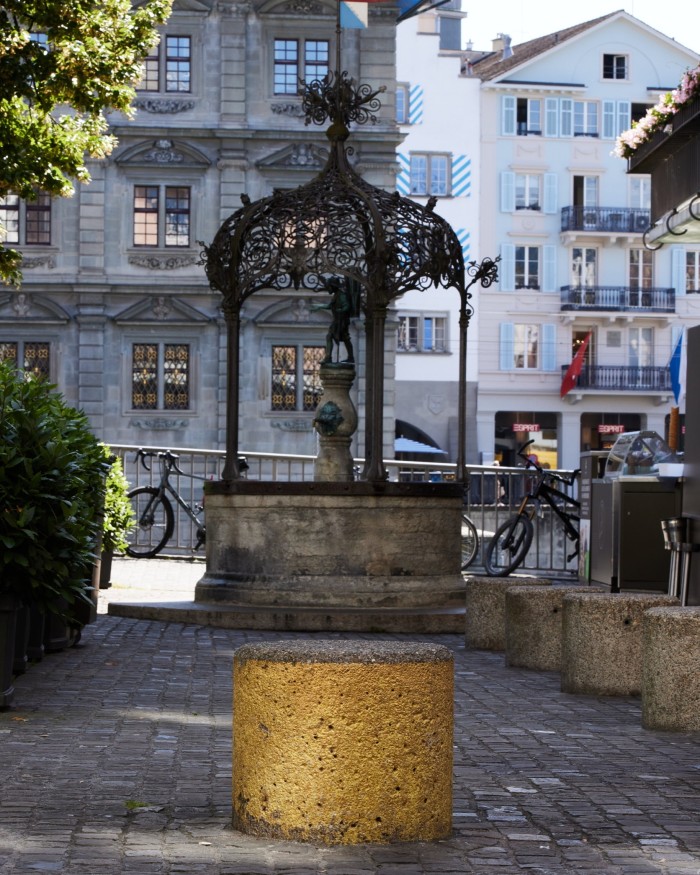
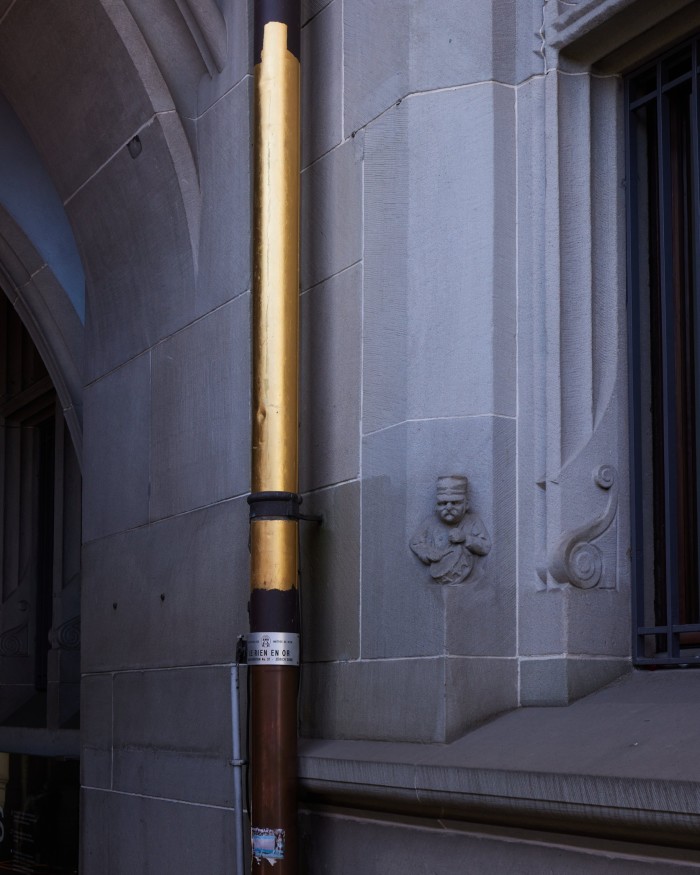
On Weinplatz, in front of the Storchen hotel, stands an elegant 1908 fountain. Look closely at the nearby bollards and you will see that one is painted gold. It’s a remnant of artist and Yello frontman Dieter Meier’s 2008 installation “Le Rien en Or” (“Gilt Nothing”), in which he gilded a range of ordinary street objects, from manhole covers to railings. This must be one of the most glamorous pieces of informal art, a fitting piece for a country in which 70 per cent of the world’s gold production is refined. A short stroll along the same side of the Limmat river towards the lake will bring you to the Stadthaus (town hall); to the right of the main entrance you will find another of Meier’s gilded interventions, this time a section of drainpipe.
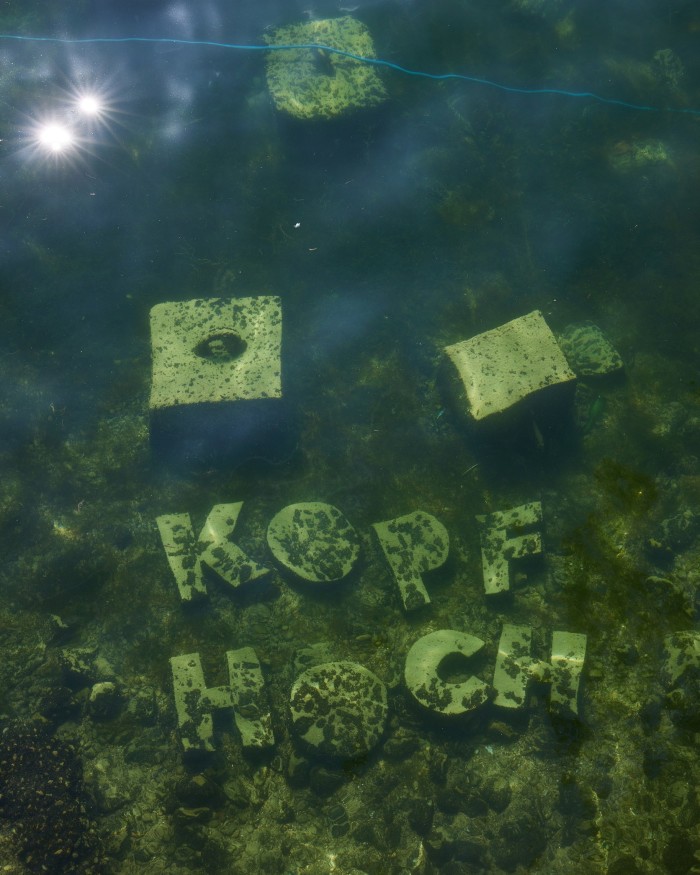
Continue along the Limmat river to the lake. If you stand on the lake side of Quaibrücke, where the bridge meets the mainland, and look into the lake, you will see Zürich’s only piece of underwater art, “Kopf Hoch” (“Chin up!”) — whoever made it remains anonymous, but it’s a reminder that in this visual city there is always cheer to be found in the next work of art.
Lakeside sculpture promenade
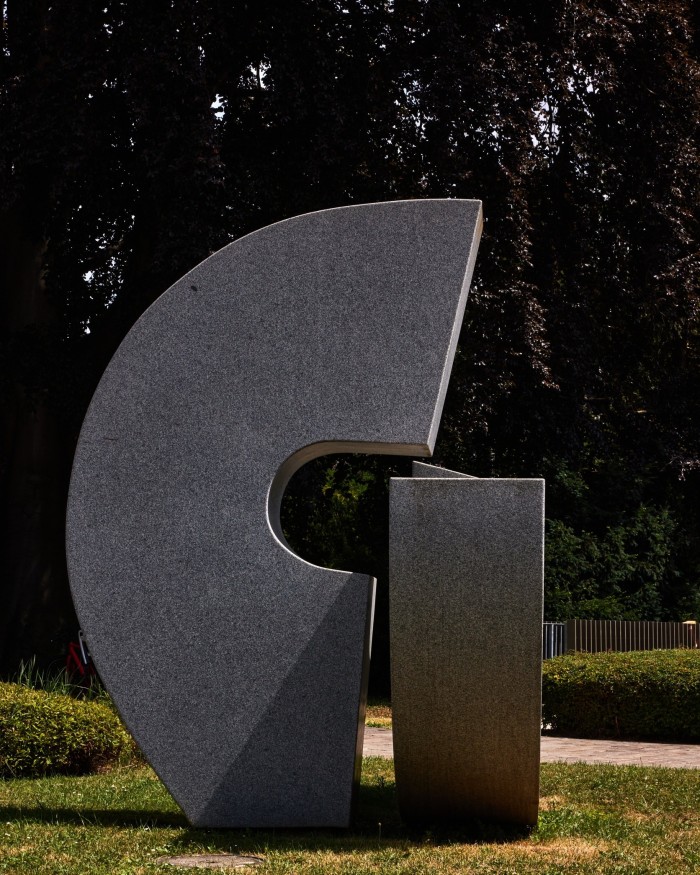
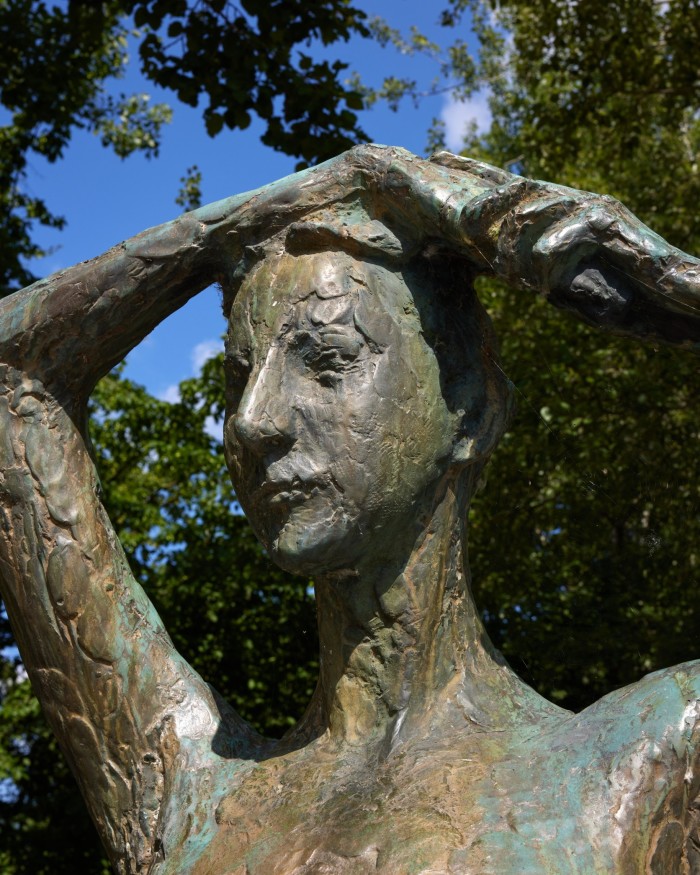
There are few more charming places for a stroll than the lakeside promenade from Bellevuepatz to the Zürichhorn Park. The promenade and park are filled with sculptures. The best way of exploring these is simply to meander, but here are some favourites of mine:
Henry Moore’s “Sheep Piece” (1971-72) is deliciously organic. It sits on a little mound overlooking the lake. Behind it, admire the rusty Corten and concrete Pyramide building (Justus Dahinden, 1969-71), now a cosmetic surgery clinic
Ödön Koch’s “Sculpture in Two Elements” (1974-75) is a curvy 1970s abstraction in perfect contrast to the angular Pyramide
Hans Aeschbacher’s abstract “Figure I” (1955-56)
Markus Feldmann’s architectural silver drinking fountain (1980)
Hildi Hess’s elegant “Female Figure” (1957-65)
Jean Tinguely’s exuberant kinetic “Eureka” (1963-64), which comes alive at 11am, 3pm and 7pm every day, April to October
Old town to the university: death, hell, flamingos and flowers
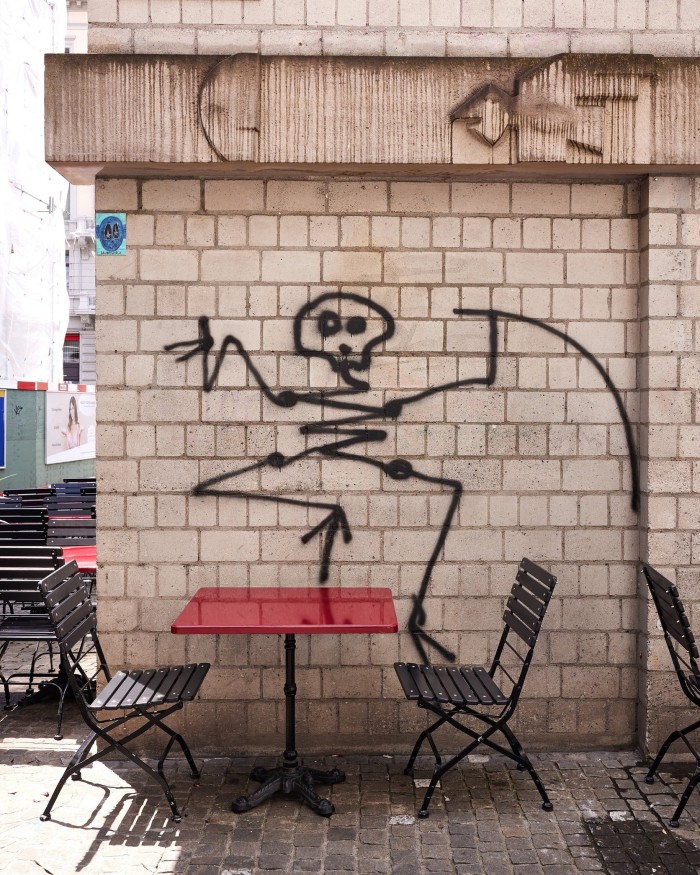
Begin on the corner of Schifflände and Krugstrasse, where you will find a lockdown Naegeli death figure dancing on a café table. On Rämistrasse, Zürich’s main gallery street, there are several recent Naegelis. As a consummate outsider artist, Naegeli is always drawn to the outside of galleries and museums: in Waldmannstrasse, just beyond the Tobias Mueller gallery, is a flamingo (you may need to move the dustbin to see it); another, further up on the corner of Hirschengraben, points to a museum display board.
Heimplatz, outside the Kunsthaus, has several significant sculptures, including Auguste Rodin’s “Gates of Hell” (controversially, Naegeli daubed a death figure behind it in 2020), Jacques Lipchitz’s “Song of the Vowels” (1931-32), Marino Marini’s “Miracle” (1959-60) and Pipilotti Rist’s giant flower light installation of 2020 (best seen after dark).
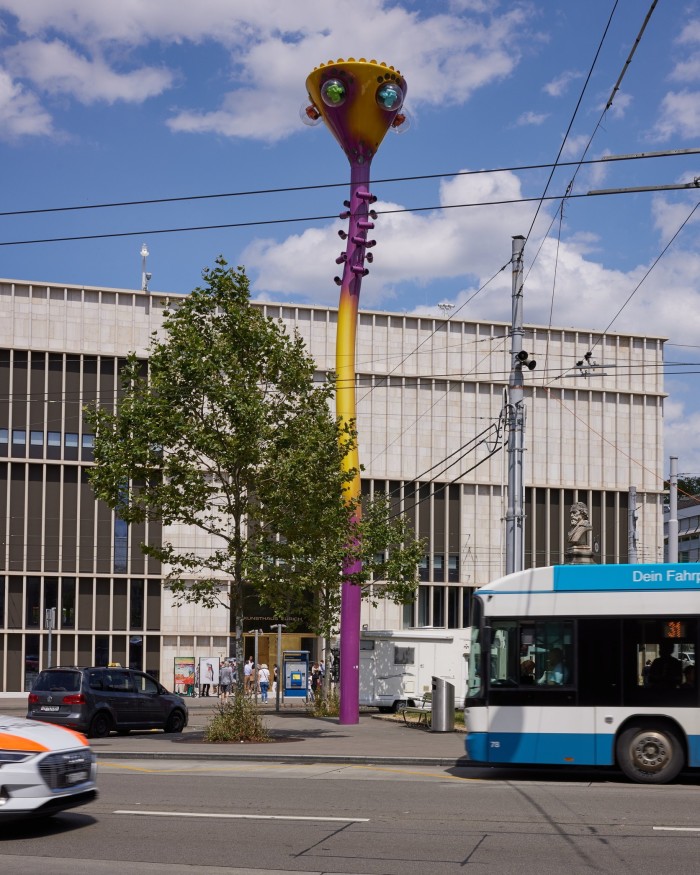
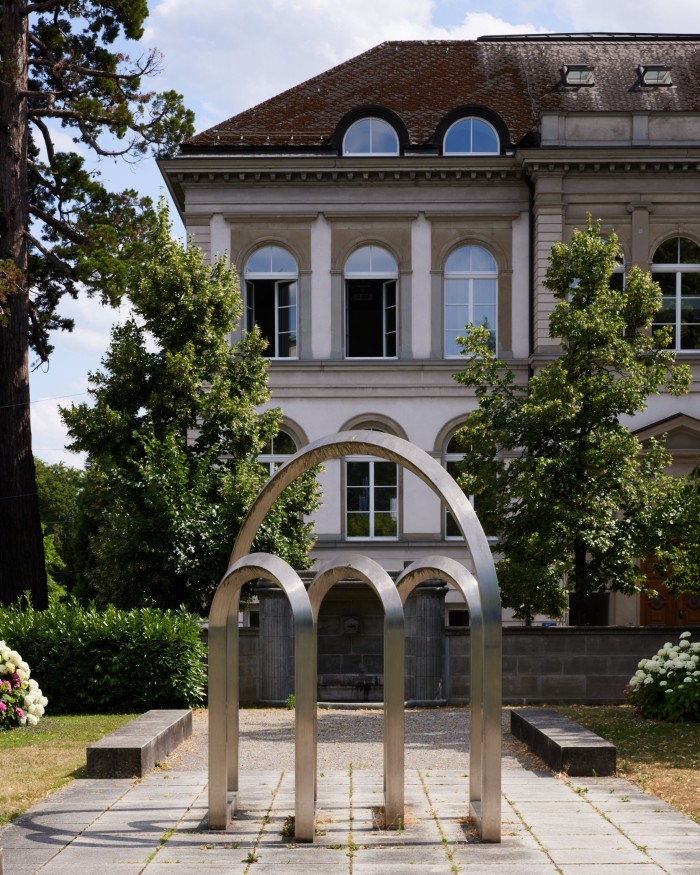
Continue up Rämistrasse. Outside the law faculty stands an elegant abstract by Santiago Calatrava, who also designed the astonishing law library behind (2004). Just up the hill is the Kantonsschule, and at the top of the steps to the right you will encounter another Naegeli, clambering on to the railing. Opposite, there’s an abstract by Markus Feldmann (1983), which echoes the Italianate arches of the university behind, as well as Swiss Concretist Carlo Vivarelli’s “3-Part Cube of 15 Units, Extroverted” (1968).
Cross the road and enter Schönberggasse. Across the lawn on the left, on the wall of the Deutsches Seminar, is Naegeli’s spookily sensuous “Undine” (1978), the first of his works to be listed. This is the perfect place for a picnic, a dystopian “Déjeuner sur l’herbe”. Turn your head away from “Undine”’s grand horizontality and you will see Vivarelli’s proudly vertical and exquisitely articulated “Column” (1967-69).
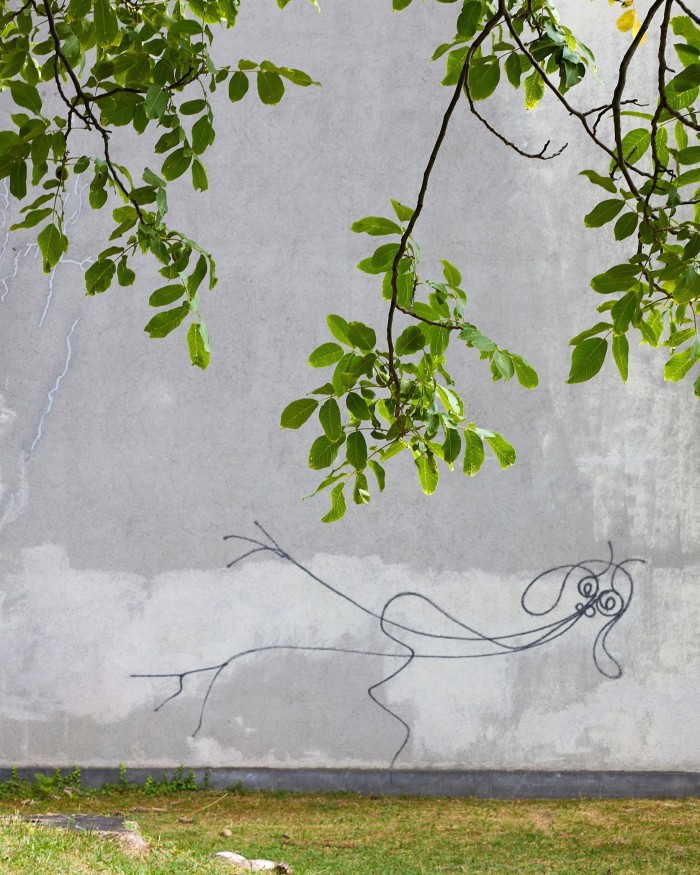
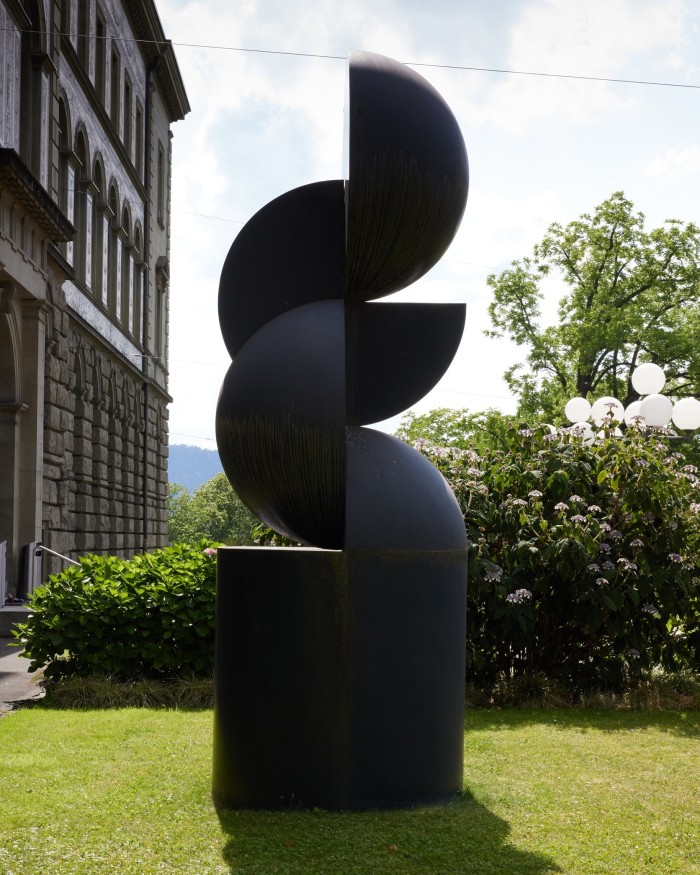
A little further up Rämistrasse you will reach ETH University’s main building, which has a magnificent collection of Swiss 20th-century sculpture. Embracing the sense of adventure that sets FT readers apart, descend into the underground car park and the curious subterranean world of the Sprayer of Zürich. Here you will find 22 Naegelis from the 1970s: a menagerie as humorous as it is menacing. You have earned yourself a cocktail.
What’s your favourite piece of public art in Zürich? Tell us in the comments below. And follow FT Globetrotter on Instagram at @FTGlobetrotter
Cities with the FT
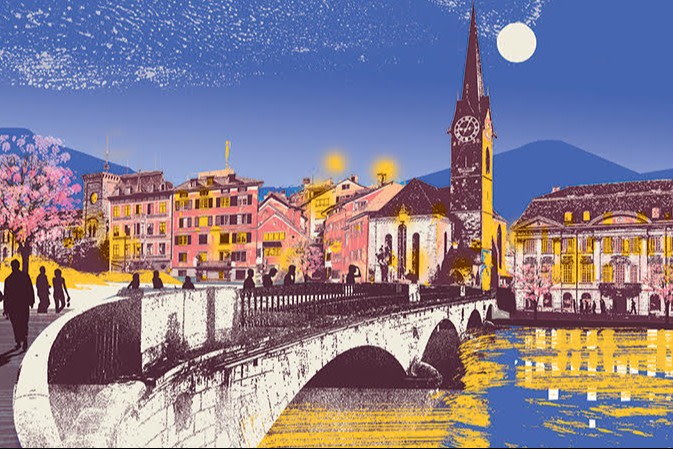
FT Globetrotter, our insider guides to some of the world’s greatest cities, offers expert advice on eating and drinking, exercise, art and culture — and much more
Find us in Zürich, Milan, London, Tokyo, New York, Paris, Rome, Frankfurt, Singapore, Hong Kong, Miami, Toronto, Madrid, Melbourne, Copenhagen, Vancouver and Edinburgh

